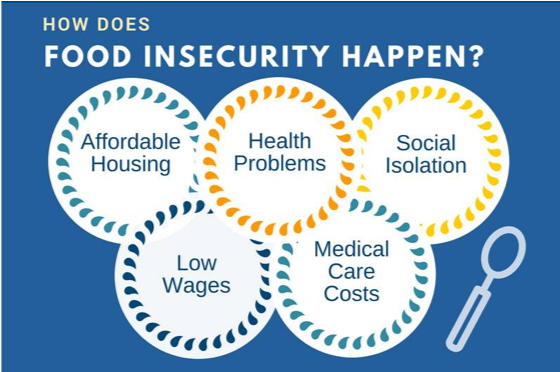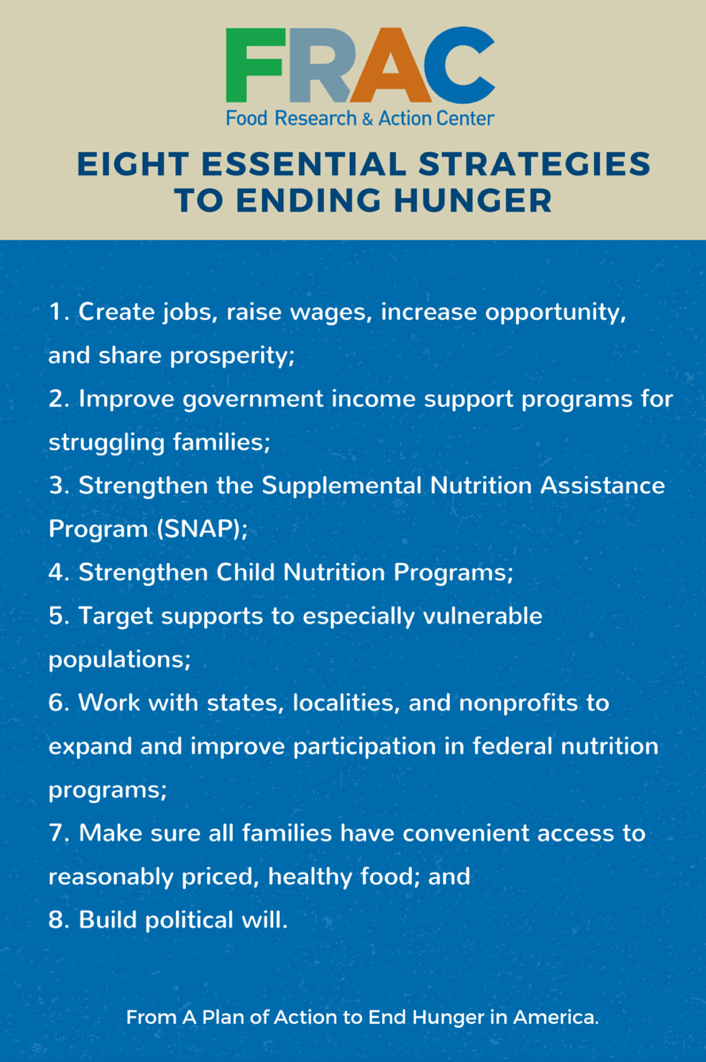Food Insecurity
What does food insecurity look like?
Do you have to miss a meal regularly to say that you’re hungry?
Academics and policymakers have defined and argued over the definition of hunger and food insecurity for years. If you are interested, you can read more on our blog here . At HIP we listen to our communities about their challenges with consistently accessing affordable, healthy, and culturally appropriate food. We are concerned about people having control over how their food is grown, processed, and distributed. Food security is not a problem of food shortage. At HIP, we believe that healthy, culturally appropriate food is a human right and it is unacceptable that in the richest country on earth anyone will have to go hungry.
What does food insecurity look like?
Do you have to miss a meal regularly to say that you’re hungry?
Academics and policymakers have defined and argued over the definition of hunger and food insecurity for years. If you are interested, you can read more on our blog here. At HIP we listen to our communities about their challenges with consistently accessing affordable, healthy, and culturally appropriate food. We are concerned about people having control over how their food is grown, processed, and distributed. Food security is not a problem of food shortage. At HIP, we believe that healthy, culturally appropriate food is a human right and it is unacceptable that in the richest country on earth anyone will have to go hungry.
Who is going hungry?
In Washington State, 1 in 11 individuals struggle with hunger. 1 in 8 Washington kids live in a household that faces challenges in putting enough food on the table.
The overall food insecurity rate in the United States of America is 10.4% (as of 2021) which translates to nearly 34 million Americans. If you are interested in more specific data, you can check out this interactive map.
Worldwide, over 2 billion people do not have regular access to safe, nutritious and sufficient food.
However, total numbers or percentages only tell part of the story. When we look into the details, we see women are more likely to be food insecure. Households with children are more likely to be hungry. African Americans and Hispanics are more than two times likely to be food insecure than Whites. So while hunger does not discriminate, it does impact some demographic groups significantly more than others.
Impacts of food insecurity.
Food insecurity has a lasting impact on our health at every stage of life. Hungry children experience developmental and physical delays that can lead to behavioral problems, decreased academic success, and a lifetime of health problems. Food insecure adults can’t reach their full potential as hunger and the stress worrying about where their next meal will come from impacts their productivity and health. Senior citizens are at increased risk from chronic diseases that are already common at this stage of life.


How does food insecurity happen?
Food insecurity is a complex, systemic problem that is intertwined with economic inequality, low wages, lack of affordable housing, increased costs of healthcare, access to equitable education, and so on. The root causes of hunger are due to the systems, policies and institutions that benefit the rich and the powerful at the cost of low-income and marginalized communities.
To achieve its vision of making nutritious food accessible to everyone in our community, HIP collaborates with community partners to create programs that aim to empower low-income and other economically and socially disadvantaged individuals. HIP does this by providing nutritional meals and nutrition education in a dignity-preserving fashion where people’s cultures are celebrated and respected.
How to solve hunger?
People who are struggling with food insecurity need emergency food support now. But when we are in an emergency mode for decades, something more fundamental is broken. The root causes of hunger are systemic and that means we cannot effectively address hunger with just direct food assistance, we need to change the policies, practices, and systems that create hunger in the first place.
We need to move from a strictly charity model of addressing hunger, to more solidarity work.
Food Research and Action Center has come up with the following eight essential strategies to ending hunger. Their complete Plan of Action to End Hunger in America is available here.
Suggested readings:
- Book: Big Hunger by Andrew Fisher. https://www.bighunger.org
- Research and reports on Northwest Harvest website: https://www.northwestharvest.org/research-reports
- Interactive Data Tools on FRAC Website
- USDA publications on Food Security in the USA
- Fong, K. et al, The Cost of Free Assistance: Why Low-Income Individuals Do Not Access Food Pantries

